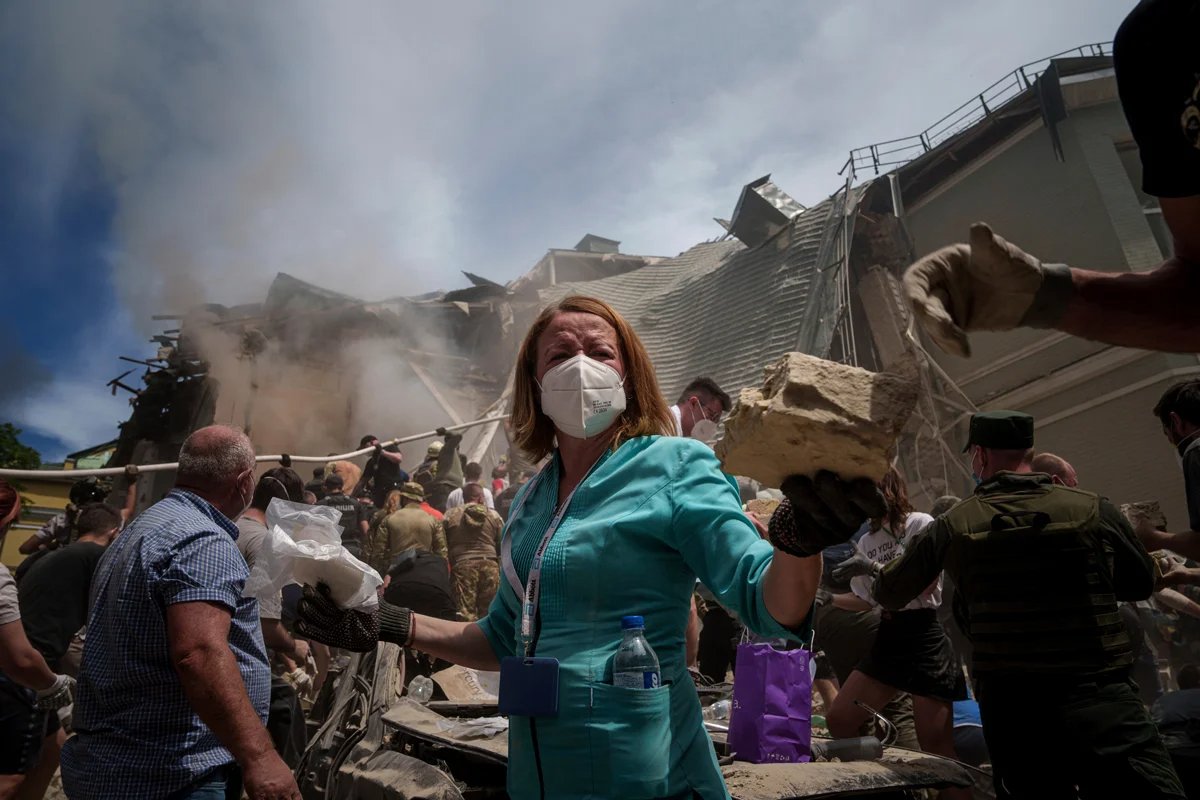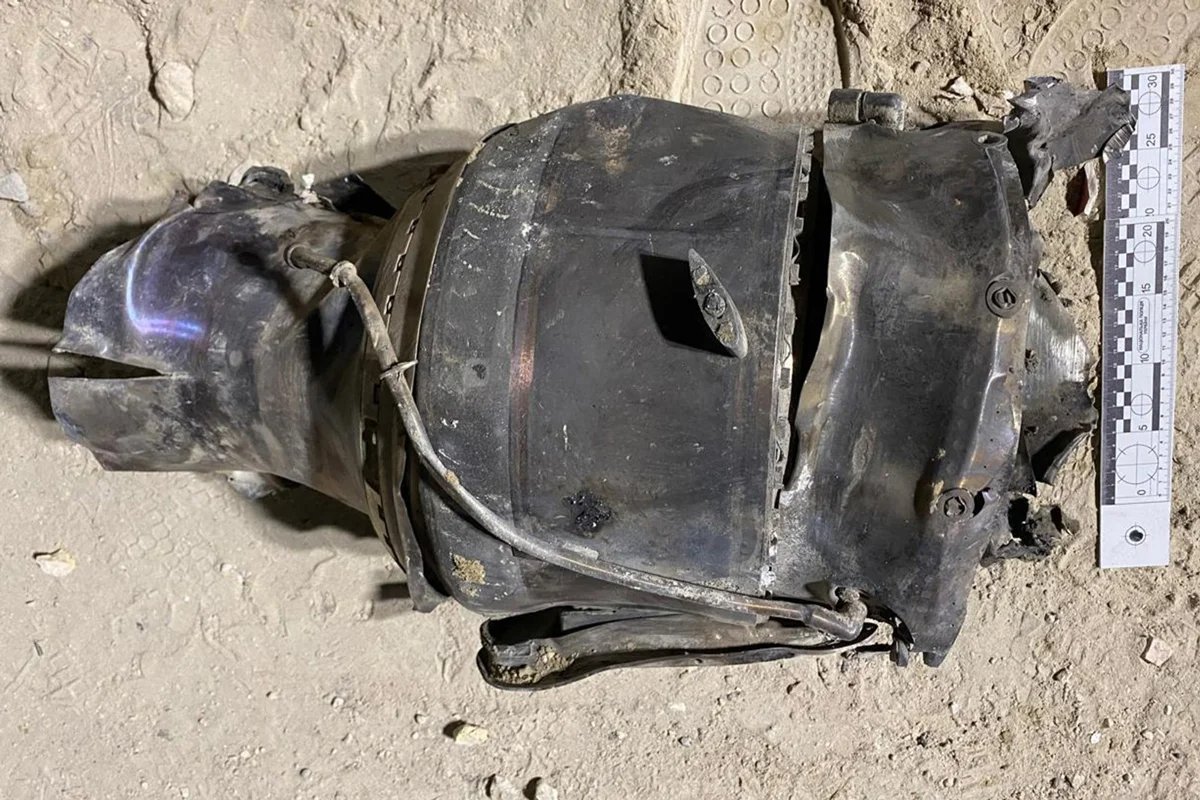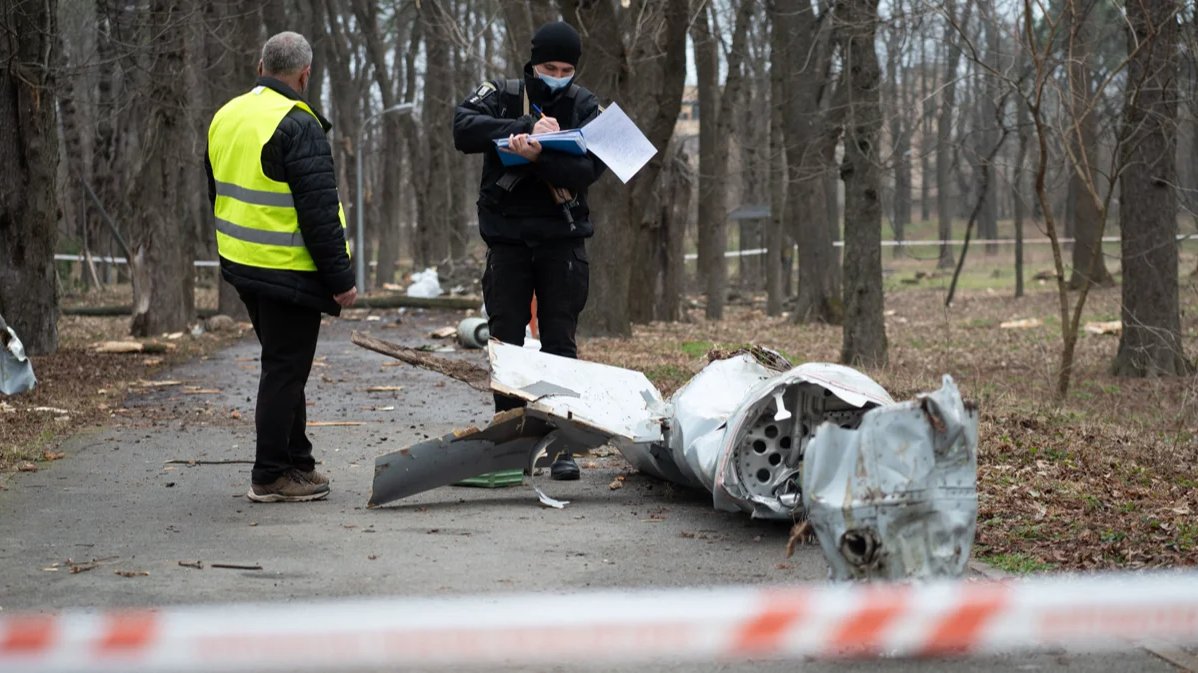Russia’s missile strikes on Monday killed at least 43 civilians and injured a further 190, with 33 innocent lives lost in Kyiv alone. But the strike that caused outrage around the world was that on Ukraine’s largest children’s hospital, Okhmatdyt.
Russian propagandists quickly got to work blaming the Armed Forces of Ukraine (AFU) for the tragedy, saying that it had actually been debris from a Ukrainian air-to-air missile launched by its air defence system that had caused the destruction.
However, experts using computer modelling have since provided compelling evidence that it was a Russian Kh-101 cruise missile that struck the hospital, and Ukrainian military intelligence has published photos of debris from the missile that match fragments of Kh-101 missiles found at the site of previous Russian airstrikes.
“The Kh-101 missile that struck the Okhmatdyt hospital attacked its target in a textbook strike and was not intercepted by air defence systems,” military expert and AFU reserve colonel Roman Svitan told Novaya Europe, adding that neither its engine nor its guidance system has been damaged.
“Another problem for Ukrainian air defences is the missile’s unpredictable trajectory, which can be selected mid-flight.”
“The missile struck exactly what it was intended to strike: the children’s hospital. This was a terrorist act, plain and simple,” Svitan said, adding that the cruise missile had been able to avoid air defences by flying at an extremely low altitude, which meant that it also went unnoticed by AFU ground radar.
As this type of missile approaches its target, it ascends and then attacks its target in a steep dive, which makes such missiles extremely difficult to guide, usually leading to some losses en route to their target. However, those that manage to avoid radar detection can usually complete their combat mission successfully.
Svitan said he believed Russia would only use this method of ultra-low altitude attack in exceptional cases, as the risk of losing expensive hardware is so high.
“Another problem for Ukrainian air defences is the missile’s unpredictable trajectory, which can be selected mid-flight,” Russian military expert Alexey Kuznetsov (not his real name) told Novaya Gazeta Europe.
Military expert Kirill Mikhailov confirmed that Kh-101s often take an unpredictable course. “We can assume the cruise missiles entered Kyiv on 8 July from the west, i.e. further away from Russia, having flown round the city first. That made them a tougher target for Ukrainian air defences.”

People clear debris from the Okhmatdyt Children’s Hospital following a direct hit on the facility on Monday. Photo: Ukrinform / Scanpix / LETA
Aerial advantage
Svitan says the Kh-101 is a standard modern cruise missile, its main standout feature being its turbojet engine that protrudes from the body, which is clearly visible on footage of the strike on Okhmatdyt.
“These are the missiles that have struck Kyiv, Vinnytsia, Odesa, Dnipro and other Ukrainian cities since the invasion began,” Kuznetsov says, before adding that more than 80% of them are successfully shot down by Ukrainian air defences.
“The number of attacks shows that Russia is producing no more than two missiles a day.”
Svitan says planes are the best way to neutralise the missiles. The early warning and control aircraft that Sweden plans to give Ukraine can track a Kh-101, regardless of its altitude. F-16 fighter jets, the first batch of which were confirmed on Wednesday to have arrived in Ukraine, can also track the missiles.
Western parts
“Ukrainian Defence Minister Oleksiy Reznikov said at the start of the invasion that Russia had 444 Kh-101 and Kh-555 missiles, which are similar,” Kuznetsov continues, “but by October 2022, fewer than half — 213 — remained. However, Russia has gone into missile production overdrive since then, with factories working round the clock. So air strikes use new missiles.”
Russia produced just 56 new Kh-101 missiles in 2021, the year before Putin ordered the full-scale invasion of Ukraine, The Financial Times reported on Wednesday, citing the Royal United Services Institute, a British defence think tank, adding that by 2023 that figure was almost eight times higher, at 420.
“The Russians can produce 10–15 of these missiles a month,” says Svitan, countering the data. “The number of attacks shows that Russia is producing no more than two missiles a day, by which I mean all types: cruise and ballistic missiles, both types of Iskander missiles, Kinzhals, Kalibrs, Kh-55s, Kh-101s and so on.”

Fragments of a Kh-101 missile near the children’s hospital hit in the Russian airstrike on Kyiv, 8 July. Photo: SBU / AFP / Scanpix / LETA
Produced at the Raduga factory in the Moscow region town of Dubna, each Kh-101 can, according to Svitan, cost upwards of $10 million (€9.2 million). “As a rule, most parts are imported from abroad, produced at various Russian military-industrial complex companies and then assembled at Dubna,” Svitan continued.
The Kh-101 missile that struck the Kyiv children’s hospital was found to have contained western parts, the FT reported, a finding that has been confirmed by military experts and Ukrainian officials.
“The Russian military-industrial complex cannot produce several key components for Kh-101 missiles.”
A Ukrainian analysis of a Kh-101 fired in January revealed 16 pieces of western-made electronics inside the missile. Two of them were manufactured by the Switzerland-based STMicroelectronics, and the remaining 14 by American chipmakers, including Texas Instruments, Analog Devices and Intel, according to the FT.
An FT analysis showed that in 2023 Russian companies were able to obtain the necessary components, all of which are principally intended for civilian use, simply by buying them on the open market and importing them via China. According to an analysis made by the Office of the President of Ukraine that was obtained by the FT, a complete Kh-101 can contain more than 50 different foreign-produced parts.
“Its manufacturers may call it a purely Russian weapon but the Russian military-industrial complex cannot produce several key components for Kh-101 missiles,” Svitan noted. “First, there are the electronics. Moscow can bypass sanctions and buy goods made by leading American and European microprocessor manufacturers through China, claiming they are for civilian use. A close surveillance system would be required to completely stop all types of electronics getting through. But even then, Russia could get Chinese analogues, because China now makes copies of almost every type of high-tech product, even if they are of a somewhat lower quality.”

